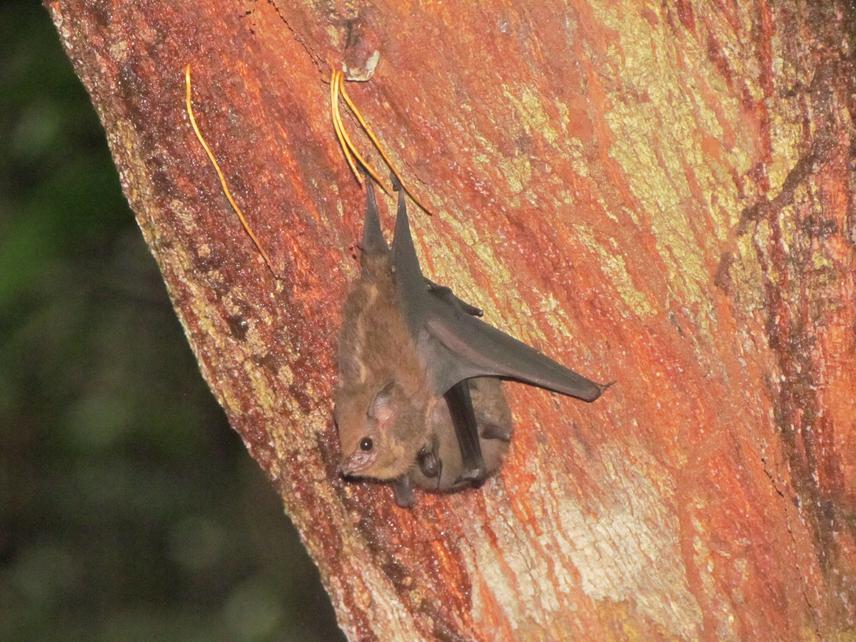Article featuring the project.
Giulliana Appel
In Amazon, deforestation occurs for the opening of highways, cities and hydroelectric dams creating a scenario of forest fragments. It is assumed that forest fragments are more instable to support climatic variations, and because that affect behavior of animals. Activity pattern changes in a fragmented area may indicate stressor in animal populations, and these responses not manifest on changes in abundance and species richness. Biological Dynamic of Forest Fragments Project have the perfect scenario to understand how forest fragmentation and other variables related to climatic conditions, moonlight, food availability and predator exposure affects the bat activity over time. The bat activity will be recorded from autonomous recording units in fragments, matrix and continuous forest. The climatic conditions will be collected by data loggers installed next to ultrasound recorders. Moonlight will be collected by luxmeters, food availability by insect traps and predator exposure will be controlled by playback of predators.

Saccopteryx leptura, BDFFP. © Giulliana Appel.
Land-use modification and climate change are the two dominant of lost on global biodiversity, but few studies analyze these impacts simultaneous. In particular, insectivorous bats have been recently documented as sensible of fragmentation and climate change effects. In general, studies on forest fragmentation generally evaluate the composition, abundance and richness of species. No studies have evaluated how the bat activity responds to variations of moonlight, climate conditions and prey-predator interaction in fragmented tropical environmental. It is necessary to evaluate the bat activity temporally because indicate how species exploit the environment. We can estimate how trophic levels are impacted; due aerial insectivorous bats’ has important ecological roles as predators, and temporal shifts in activity can modify the outcome of interspecific interactions. My work involve the interaction of bat predators and bat activity, the moonlight can influence these relationship so one of my goals is to demystify how bats change their activity in full moon nights due a more exposition of predator in open areas.
Biological Dynamics Forest Fragmentation Project (BDFFP) is the perfect scenario to study responses to fragmentation and climatic conditions in Amazon Forest. BDFFP is the world’s longest lived experiment of habitat fragmentation and the forest fragments were isolated from continuous forest by distances of 80-650 m in the early 1980s. Into a conservation importance, BDFFP have data that help to identify the direct effects of a warmer and drier climate on the fragmented forest. It is commonly assumed that the microclimate at forest edges is significantly hotter and drier that in the continuous forest. This fact is fundamental to evaluate the tolerance of bats in altered habitats and this study can be used for identification of potential species indicators of environmental disturbance.
Field activities will consist to the installation of autonomous ultrasound recorders in the fragmentation forest of BDFFP. Bat activity will be sampled in different environments of each expedition (fragment interior, matrix and continuous forest). The recorders will install next to data loggers that estimate climatic conditions of the local area. To understand how the predator presence and insect quantity in a fragmented environment influence temporal activity of aerial insectivorous bats, I will collect insects with Malaise traps and I will put a playback of possible bat predators in all the sample units. Each expedition will have duration of ten nights, that represent dark nights (new moon) and bright nights (full moon) in lunar cycle.